All About Marble Slabs
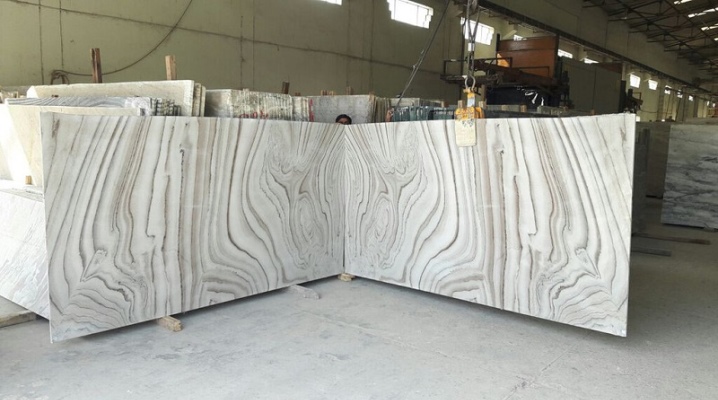
Knowing all about marble slabs and having a clear idea of what a marble slab is, it is easy to avoid almost any mistakes in their use. You will have to carefully study the dimensions of the finished products. You will also need to take into account the difference between white and gray, black and other blocks, find out the features of laying slabs.
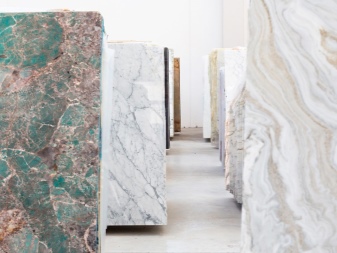
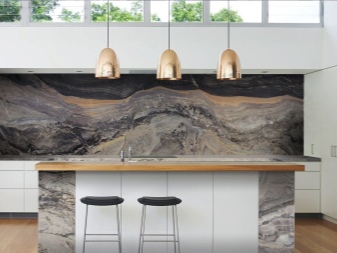
What it is?
It is generally accepted that marble slabs are a kind of soft stone. They crack easily on impact and are subject to temperature fluctuations. But the aesthetic merits of marble slabs have led to their unchanged popularity for many centuries. Strictly speaking, Only a monolithic stone slab can be called a slab in the full sense of the word. It is obtained by sawing blocks of colossal size, extracted directly from the quarry.
Marble slabs have a unique noble structure and appearance. They are readily used by builders, landscape designers, and decorators of the interior of finished buildings. Modern methods allow minimizing waste generation, obtaining the maximum possible amount of marble and, in addition, preserving the natural beauty of the stone.
Special technologies of chemical action have been worked out. They only improve the quality of the mineral, increase its aesthetic appeal, without affecting the practical qualities and safety of the material.

The advantages of marble are:
- absolute level of hygiene;
- environmental friendliness;
- no risk of rotting;
- zero probability of being damaged by microflora, rodents, insects and other pests;
- long period of operation;
- ease of care;
- moisture resistance;
- resistance to ultraviolet radiation;
- the uniqueness of each individual sample.
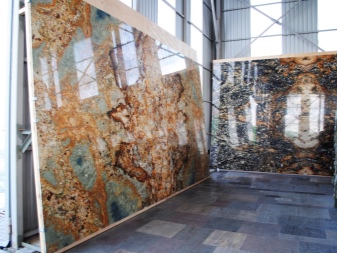
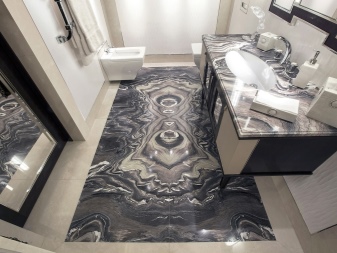
Processing methods
The technique of heat treatment of marble is widespread. Along with the direct supply of heat from the outside, there is a particular option when significant pressure is exerted on the surface of the stone. According to the laws of physics, this increases the temperature in the surface layer. Important: heat treatment is mainly carried out in industrial enterprises that have special equipment and a staff of trained professionals. This is especially important also because treatment with acids and saturated surfactants can be carried out along the way.
Mechanical action on marble implies processing with a variety of abrasives. This method is already available not only to serious enterprises, but also to individual workshops, and even to private stone cutters. Heat treatment and mechanical treatment are acceptable for all types of marble. But they are additionally divided into a number of private techniques that deserve separate consideration. So, almost any specimen of a slab on the market was cut.
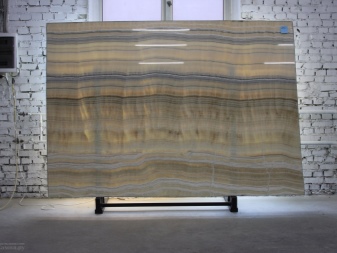
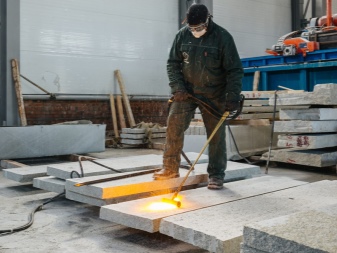
If after that it has not undergone any additional processing, then its surface will be uneven, covered with roughness. The pattern is usually pronounced. But usually the stone is also subjected to grinding. If the treatment stops there, the surface of the marble dulls and takes on a matte appearance. Such slabs are used to decorate non-slip surfaces.
To make a sculpture out of a slab or to make a bas-relief, you already need spot processing. But even if you just get a decorative slab for walls, floors, polishing is also usually carried out. It revives the pattern and color of the stone temporarily weakened by grinding.Polished marble is shiny and pleasant to the touch. The surface after polishing is smooth and glides very intensively.
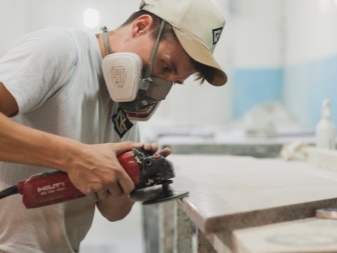
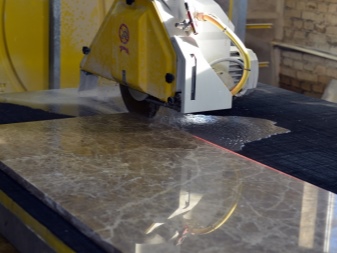
It is worth mentioning such a component of finishing marble as bush hammering or artificial aging. It applies if a particular instance will be used in an understated old-fashioned interior. As for heat treatment, it is divided into several private methods, one of which is heat treatment in the narrow sense. The stone is briefly heated to the melting point, as a result of which the surface begins to peel off as if. This technique provides increased strength.
A somewhat similar method is crystallization. Even his goal is the same. But surface hardening is achieved through treatment with surfactants and acids. It also helps to give the material a mirror-like appearance, to emphasize the marble pattern.
Professionals can more accurately understand the particular nuances of processing, and a layman just needs to know what has already been said.
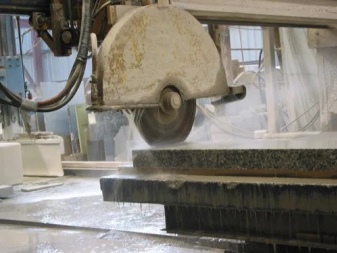
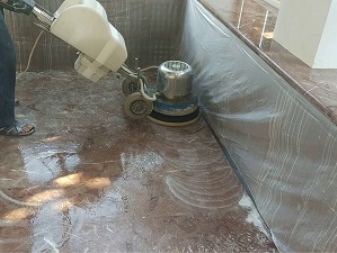
But if there is a desire to organize a workshop for the processing of the same slabs, then you need to understand the machines used. So, equipment for cutting marble is divided into cantilever, tile and bridge types. This classification determines not only the type of processing element, but also the ability to work outdoors or only in an equipped space. Some cutting machines are designed to supply water to cool the cut being cut.
You can cut and grind marble with waterjet cutters. Such a tool is almost universal and can be used not only for marble. True, it is very expensive and is actually available only to specialized enterprises. Grinding machines and floor polishers help to grind and polish slabs. A number of their samples are able to provide the highest quality processing at a low cost of time, effort and special materials.
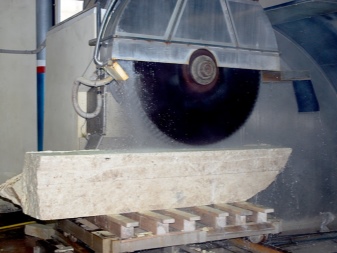
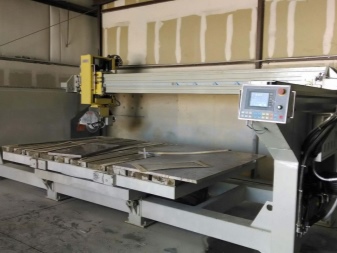
What are they?
All slabs are rectangular. The thickness ranges from 2 to 4 cm. The size along the long edge is 1.8-3 m. On the short edge, this indicator ranges from 0.6 to 2 m. The color of the slab is also important. White marble is distinguished by its sophistication and versatile appearance; it integrates harmoniously into almost any interior. In addition, white stone can be perfectly combined with a variety of decorative and construction materials.
It is also worth paying attention to the black type of marble. It is quite rare and therefore very expensive. The price reaches hundreds of thousands of rubles per square meter. The main deposits where black marble slabs are mined are located in Turkey and Spain. Gray stone not only fits into the surrounding environment, but also allows you to give the interior any direction, emphasize its dynamics. This marble is suitable for almost any room. Contrary to popular belief, gray can be quite interesting - the main thing is to present it correctly.
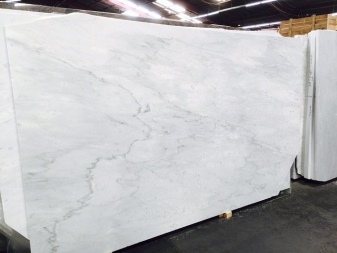
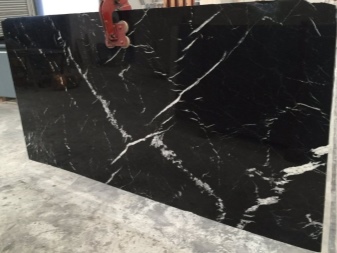
Interior designers speak well of beige marble varieties. It is suitable for exterior cladding of buildings. This material is combined with bronze, brass, wood and glass. You should also pay attention to the blue marble. This is an expensive material that can be useful not for finishing work surfaces, but for decorative areas. Blue marble can have large to medium grains. The best quality samples come from Argentina. Blue marble can be used to decorate the facade of the house - and it will look original.
Brown stone comes in dozens of different varieties. The stains on such material are almost invisible, in contrast to the black and white versions. The classic is brown Spanish marble. The Italian counterpart can also be quite good. The difference between the individual varieties is related to the color of the veins and their geometry.
The use of brown stone is perceived as an element of a stable, conservative interior, and allows for exquisite taste to be demonstrated.
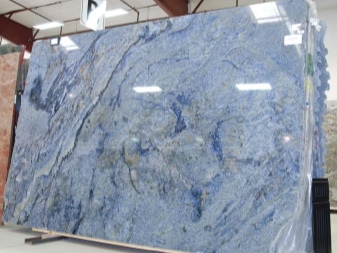
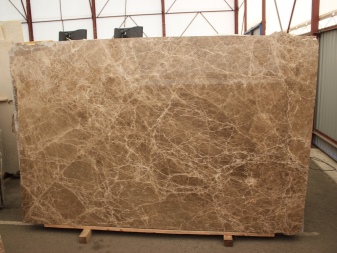
Where and how are they used?
Laying marble slabs is widespread in modern life. They are used to do:
- walls;
- internal columns of buildings;
- window sills;
- baths;
- countertops;
- bar counters;
- internal stairs and their steps;
- pool sides.
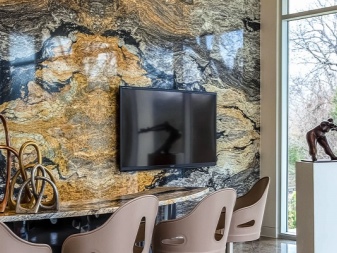

In the next video you will see the quality check of the Turkish Emperador Light marble slab.













The comment was sent successfully.